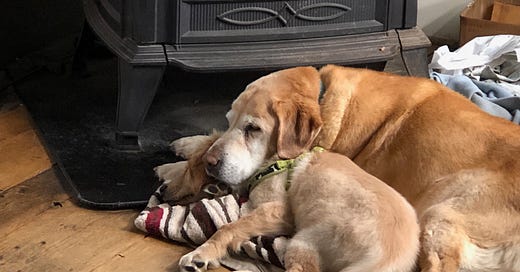It was my husband’s idea in January of 2019 to get a puppy to share the twilight months of our 15-year-old yellow lab, Ginger. Only flagging energy and arthritis slowed down Ginger’s sociopathy: running away at every opportunity, shredding and scattering garbage whenever we weren’t looking, and never, ever, coming when she was called. Now she creaked w…
© 2025 Maura Casey
Substack is the home for great culture




